Tonalism was an art movement that emerged in the United States during the 1870s and was characterized by hazy and atmospheric landscapes and muted color palettes. In this post, I will discuss some of the key facts, ideas, artists and take a closer look at some master Tonalist paintings. I cover:
- Key Facts and Ideas
- Defining Characteristics of Tonalism
- Figurehead Artists of Tonalism
- A Closer Look at Tonalist Artworks
- Tonalism Quotes
- Want to Learn More?
- Thanks for Reading!

(Before diving into this post, make sure to pick up a copy of my free Landscape Painting Starter Kit.)
Key Facts and Ideas
- The movement lasted from 1870 to 1915. It was mostly based in the United States, but there was also a rise of Australian Tonalism in the 1910s.
- It was inspired by the moody and atmospheric landscapes produced by Barbizon School artists, like the one below.
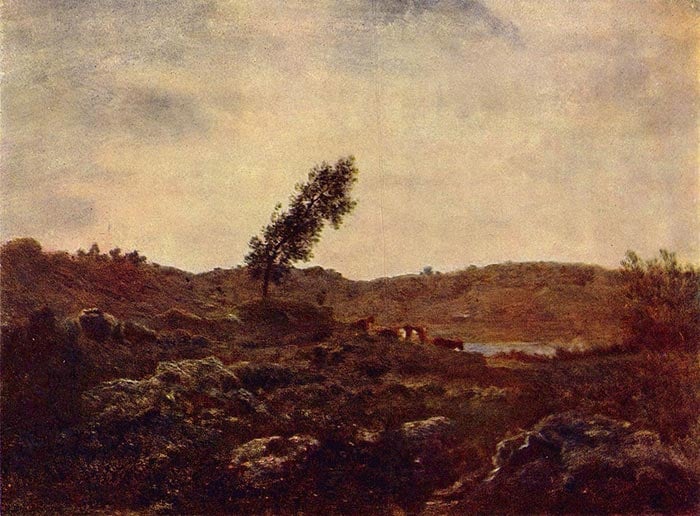
- Tonalist artists were not focused on creating perfectly rendered and accurate paintings, nor were they focused on telling stories or ideas. They believed in “art for art’s sake”.
- Music was also a strong influence on Tonalism. Notable artists from the movement often used musical references to describe their works. James McNeill Whisler even went so far as to name some of his best works with musical terms, such as Arrangement in Grey and Black No. 1 and Nocturne in Black and Gold: The Falling Rocket. I take a closer look at both of these paintings later in this post.
“To say to the painter that Nature is to be taken as she is, is to say to the player that he may sit on the piano.” James McNeill Whisler
- Landscapes and nature were the main subjects, but portraits were also painted from time to time.
- Like the Impressionists, the Tonalists were interested in capturing the effects of light, particularly moonlight or the hazy light from dawn or dusk. Many of the Tonalist artworks feature a strong contrast between a dark and moody foreground and the “glow” of an ambient light source in the background, like in the painting below by George Inness.
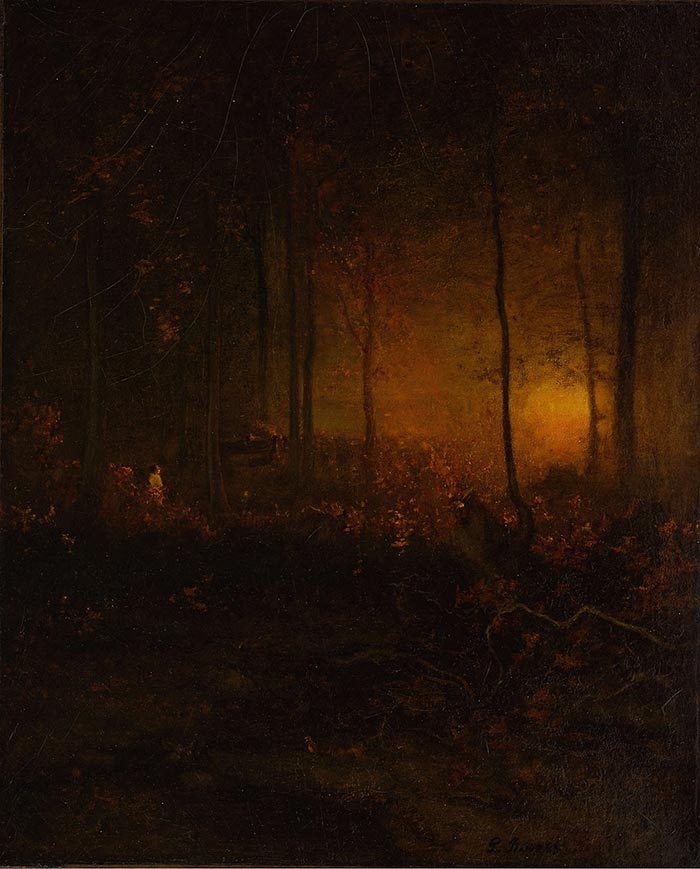
Defining Characteristics of Tonalism
Tonalist paintings tend to have the following defining characteristics:
- A moody and dramatic atmosphere.
- Loose and visible brushwork.
- A lack of detail or fine rendering, particularly in the darks.
- Muted colors (dull yellows, greens, oranges, browns and grays).
- A strong contrast between light and dark, or saturated and dull, usually to bring attention to the light source in the painting.
- A lack of any underlying meaning or storytelling.
- A strong focus on nature.
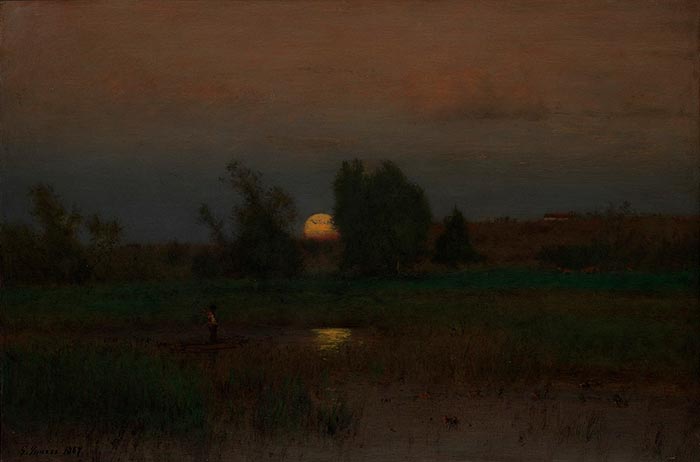
Figurehead Artists of Tonalism
For a lesser-known art movement, it did produce many highly renowned artists, such as:
- James Abbott McNeill Whistler
- George Inness
- Arthur Frank Mathews
- Albert Pinkham Ryder
- Ralph Albert Blakelock
- Thomas Wilmer Dewing
- Julian Alder Weir
- Robert Swain Gifford
- Alexander Thomas Harrison
- John La Farge
- Lowell Birge Harrison
- John Francis Murphy
- John Henry Twachtman
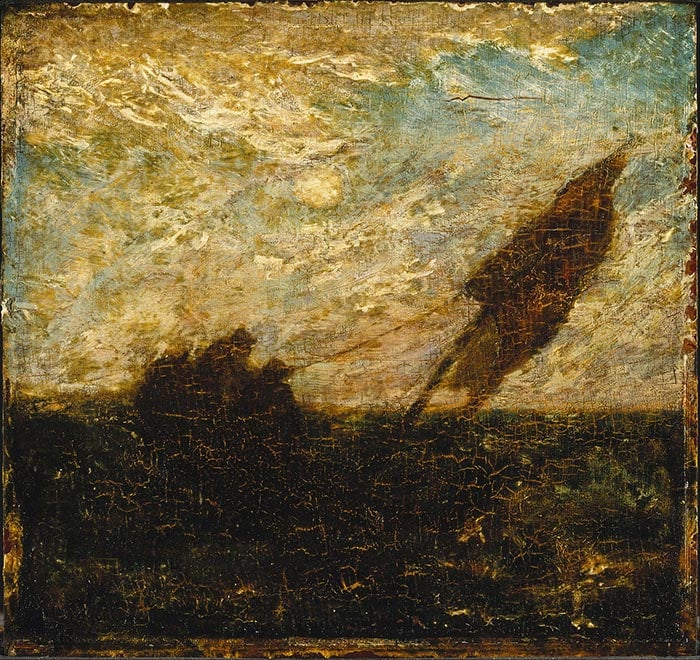
A Closer Look at Tonalist Artworks

Whistler’s portrait of his mother is one of his most iconic paintings. The name of the painting suggests the influence of music, with Whislter arranging the gray and black shapes like a composer arranges musical notes. If you squint at the painting, you can clearly see the arrangement of dominant shapes. In particular, notice how his mother’s black dress merges in with the black part of the wall, creating one solid shape.
There is a pleasing balance between large areas of simplified detail (the wall, floor and black dress) and small areas of intricate detail (the subject’s face, hands, the framed picture and the decorations on the curtain).
Key Takeaway: Small areas of intricate detail can have the same, or greater, impact as large areas of simplified detail. This can be a powerful compositional technique which you can apply to your own paintings.

Here is another of Whistler’s paintings named in reference to music; Nocturne can refer to a musical composition which is inspired by the night. Whistler wrote the following about the painting:
“By using the word ‘nocturne’ I wished to indicate an artistic interest alone, divesting the picture of any outside anecdotal interest which might have been otherwise attached to it. A nocturne is an arrangement of line, form and color first.” James McNeill Whistler
The painting features firecrackers falling over London’s Cremorne Gardens. But you would struggle to identify that without knowing the context or title of the painting due to the level of abstraction used by Whistler.

This is a great demonstration of how to use subtle grays in a painting, without it appearing bland or uninviting. The relatively saturated greens in the foreground contrast against the dull greens, blues and grays in the atmospheric background.
There is a sense of calm about the painting. The sky is broken up with some light tones to suggest clouds just above the horizon line. The water is still, with the reflection unbroken.
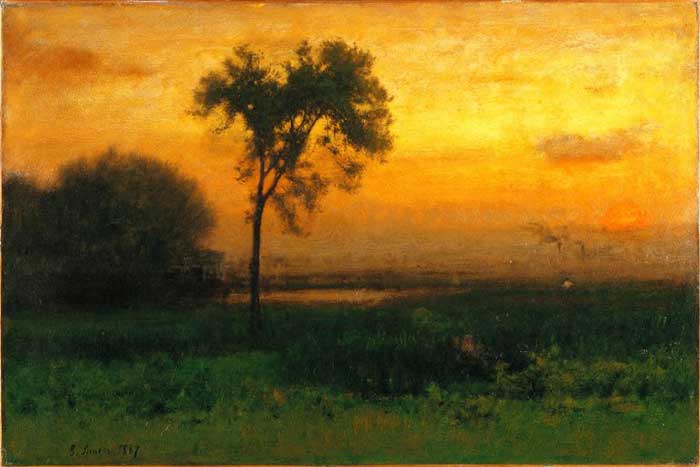
One of the key takeaways from the Tonalism art movement is how to paint the illusion of light. Above is just about as close as you can come to painting the same intensity, richness and vibrancy of light itself. Inness did so by contrasting a dull, dark and green foreground against a vibrant background of rich yellows and oranges.
Tip: If you are trying to paint the illusion of warm light like the sunrise above, then be careful with using white to lighten your colors. Sometimes brighter, richer and more saturated colors are more effective than just lighter colors. Also, titanium white will make your colors cooler, so that can work against you when painting warm light sources.
Tonalism Quotes
“A work of art does not appeal to the intellect. It does not appeal to the moral sense. Its aim is not to instruct. Not to edify. But to awaken an emotion.” George Inness
“The true use of art is, first, to cultivate the artist’s own spiritual nature.” George Inness
“Science for the soul.” Sadakichi Hartmann
“Art should be independent of all clap-trap – should stand alone, and appeal to the artistic sense of eye or ear, without confounding this with emotions entirely foreign to it, as devotion, pity, love, patriotism and the like. All these have no kind of concern with it; and that is why I insist on calling my works ‘arrangements’ and ‘harmonies.” James McNeill Whistler
“It looks like Barbizon, the land of Millet…This land has been farmed and cultivated by men, and then allowed to revert back into the arms of mother nature. It is only waiting to be painted.” Henry Ranger

Want to Learn More?
You might be interested in my Painting Academy course. I’ll walk you through the time-tested fundamentals of painting. It’s perfect for absolute beginner to intermediate painters.
Thanks for Reading!
I appreciate you taking the time to read this post and I hope you found it helpful. Feel free to share it with friends.
Happy painting!
Dan Scott

Draw Paint Academy


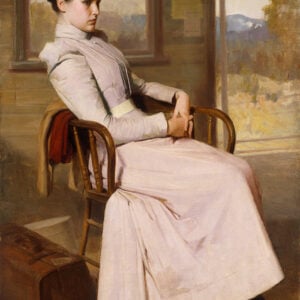
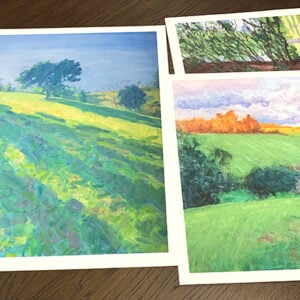
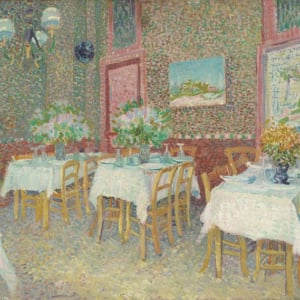
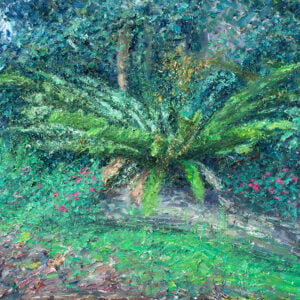
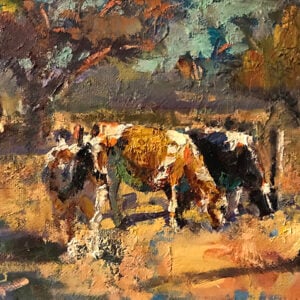
Thank you! I did not know about the Tonalist movement or that Whistler was part of it. It resonates with md strongly.
Never heard of that Name in France but I Could link some of the paintings here shown to our Symbolism.
I have always loved these works, particularly those of Whistler and Innes. As I look through my own journals, I see that I often like to create moodiness since I live near the ocean. I love working with the sky’s clouds and lights and colors. Thank you for introducing me to tonalism. Now I will take a closer look at the techniques and try to improve my own. I really enjoy your insights. Thank you for taking the time to inform us.
It’s really helpful!!
Every day I am reading Dan Scott ebook I always feel that I have got some knowledge about art and painting skills. He is a great art teacher and it seems he knows everything that I want to learn.
Looking at these pictures, I can’t help feeling that some of them didn’t leave the artists easel looking like this. The period you mention, 1870 to 1915 is the pinnacle of the period when many pictures quickly darkened badly and fell apart, usually put down to the excess use of megilp, bitumin, highly leaded (drying) oils coupled with the domestic burning of sulphurous coal, the move from studio preparation of painting materials by the artist to commercial materials sold by dishonest manufacturers adulterating and counterfeiting the artists’ materials they sold. Perhaps tonalism was a movement trying to adapt to these facts, in the same way that poor modern software is given the excuse ‘it’s not a bug, its a feature.’
Thank you outstanding read
Thank you. An excellent explanation to help identify paintings in this genre.
Thank you for the info on the Tonalist movement which I never heard of. Most of the paintings are quite
beautiful with the contrasts of light and dark with grayish colors/
Who knew that reading your daily lessons would become more important to me than facebook or any other social media. Thank you so much for reminding me what sparks my passion.
I agree Neil. I’d rather spend 10 minutes a day reading Dan’s emails instead of 100 minutes a day reading Facebook posts.
Thanks Linda! Really glad to hear this. Dan
Reading Dan Scott took me completely off of Facebook. Haven’t missed it, either.
Thanks Ginny!
Thank you for your kind words Neil! Appreciate it. Dan
Being new to your site, I find it very informative, with the right amount of depth and accurate reporting or teaching. Continue the good work. CH
Appreciate the effort you put into these articles. I find them very helpful. thanks you.
Fantastic Thank you for putting this together!
Again your names is attached to learning about art and the enjoyment there of. Thanks for each and every one.
Thanks Dan,
I like this concept, whilst I love “bright” art , this tonal art has a lot of appeal for me. I appreciate your post and the way you presented it.
Thanks again, Dave M (AUSRALIA)???
Thank you for a wonderful, insightful lesson. Every time I go to your website I learn something new, interesting and useful. Many thanks.
I enjoyed this very informative lesson. Thanks
Thank you so much Dan. Found this soooo interesting. Really enjoy your lessons.
I love the saturation of color in Inness’ Sunrise. Thanks for the review on Tonalism. Good lessons to be observed.
Thanks for this great article. I went to the Met and fell in love with all the tonal art paintings and I’m actually painting one as I write this. This article is very helpful as I could have used this before I started my first tonal painting. Really useful information and I love all these paintings.
Very interesting Dan! I learn more about art every day. It makes me wish I’d studied Art History rather than just History!!!
Thanks very much!
What a great lesson, looking at these paintings is like a step back in time I love it
Thanks Dan
Really enjoyed this lesson on tonalism. Growing up on the Maine coast, I am always attracted to moody atmospheric scenes and now this has given me some insight on how to express it in my art. Thank you!
What a beautiful overview of Tonalism, Dan. Thank you.
You are wonderful, Dan, that you give so much to us with your emails.
Unfortunately, Tonalism does not speak to me and the artists’ quotes sound so pompous! I enlarged all of the paintings to better see all the details and the way light is interpreted. Even so, many of them are dark and dismal.
Glad that’s out of the way!!
Thank you, Dan Scott, for featuring the Tonalist Movement in this article. I love the moodiness and philosophy of the tonalist artists. George Innes in particular is one of my favorite artists.
There is a renewed interest in tonalism today and many excellent artists are working in this style. For those interested in contemporaries working in this style, I would suggest visiting the website of the American Tonalist Society. Their website is informative and it features the paintings of some of today’s finest tonalist artists.
I love receiving your emails, Dan. Thanks so much.
Hello Dan,
Thank you! Again a pleasure to read you.
Ana